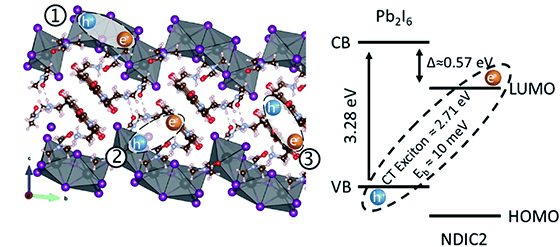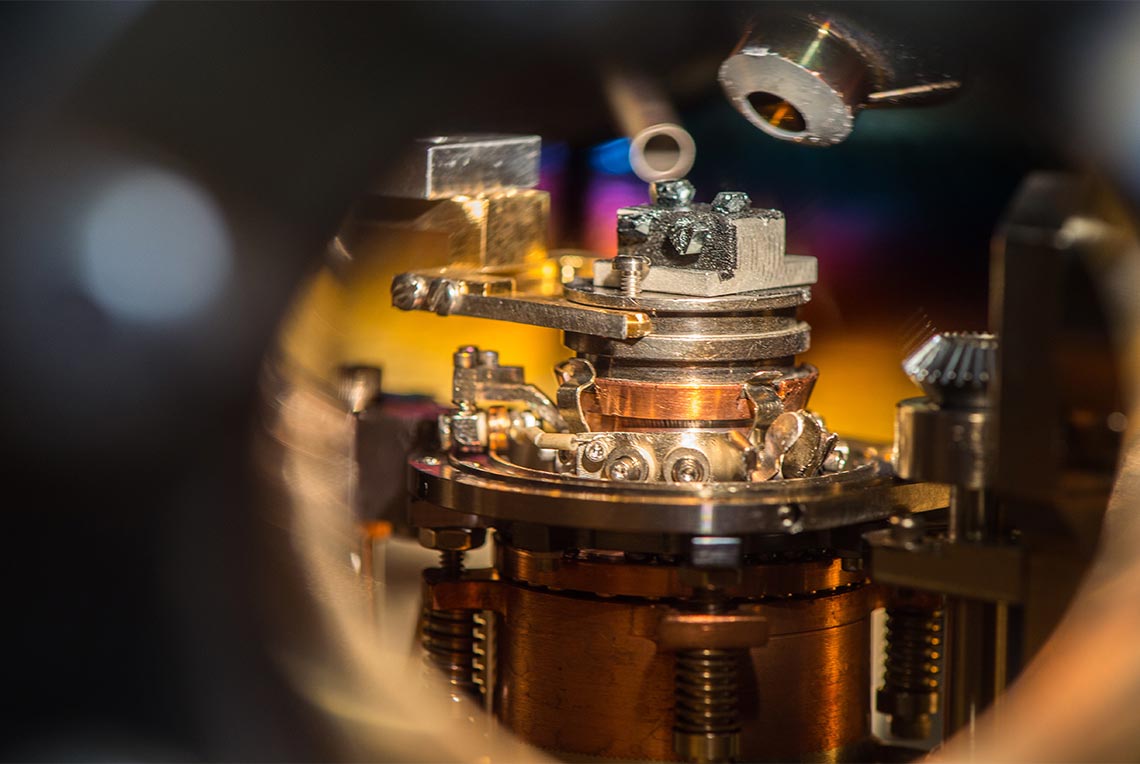Charge Transfer States and Carrier Generation in 1D Organo-Lead Iodide Semiconductors
June 15, 2021
In this study, we utilize many different structural and spectroscopic probes, along with detailed theoretical calculations, to connect the structure and energy landscape of the organic/inorganic interface to the dynamics of photoinduced charges in these novel 1D metal halide semiconductors. The band alignment at the heterojunction interface facilitates rapid separation of photogenerated charges, where charge recombination is hindered by the spatial separation of charges across the organic/inorganic interface.
Scientific Achievement
We demonstrate a low-dimensional hybrid organic/inorganic metal halide semiconductor with a charge-separating heterojunction formed between the organic and inorganic frameworks.
Significance and Impact
Efficient charge separation in metal halide semiconductors can enable more efficient
optoelectronic devices, such as photovoltaics, photodetectors, and spintronic devices.
Research Details
- Synthesized 1D lead iodide semiconductors with large aromatic naphthalene diimide (NDI) organic cations.
- Used steady-state and time-resolved spectroscopic tools to track photoinduced charge separation.
- Demonstrated an absorptive charge transfer transition across the organic/inorganic framework.
- Confirmed charge transfer interactions with density functional theory calculations.
DOI: 10.1039/D1TA03325E
Related People
Volker Blum
Duke University
Jeffrey Blackburn
National Renewable Energy Laboratory

NDI organic cations template the self-assembly of one-dimensional lead iodide quantum wires. The staggered electronic band offset between the lead iodide wire and the NDI cation creates an internal charge-separating heterojunction.









